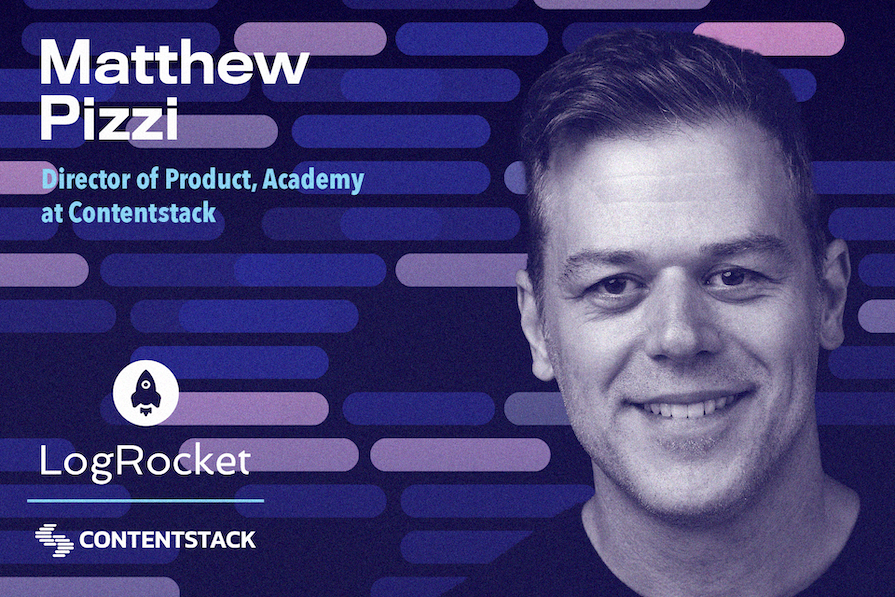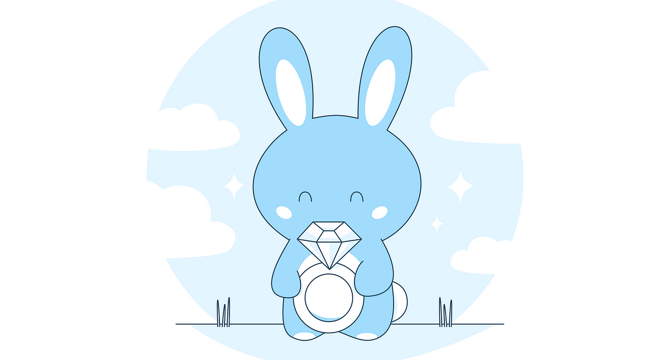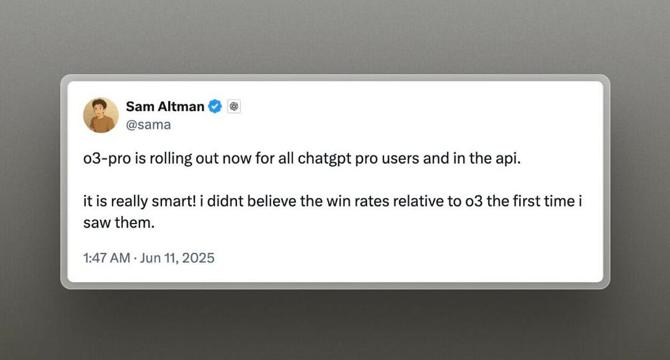Product Management News
Medium
247

Are You Stuck in a Roadmap Delivery Trap Without Knowing It?
- Strong planning often lacks the crucial 'why' behind building products and addressing customer needs.
- Roadmaps should allow for exploration and not just focus on pre-approved features for delivery.
- Delivery-driven approaches may lead to building products without addressing real customer problems or testing ideas efficiently.
- Comparing a chatbot implementation shows the difference between delivery and product-driven approaches.
- Product-driven organizations prioritize understanding customer needs and iterating based on real data and feedback.
- Roadmaps are meant to guide direction, not dictate exact solutions, emphasizing the importance of leaving room for discovery and adaptation.
Read Full Article
14 Likes
Medium
377

Image Credit: Medium
From Vision to Tactics: Delivering Your Products
- VMOST framework includes Vision, Mission, Objectives, Strategies, and Tactics to align product development with the ultimate purpose and prevent drift between strategy and implementation.
- Product Vision serves as the aspirational destination guiding every decision, while Mission defines the product's current purpose and target audience.
- Objectives are time-bound targets translating Mission into measurable outcomes, and Strategies outline high-level approaches to meet Objectives.
- Tactics are concrete actions that bring Strategies to life, connecting day-to-day work to the overarching Vision.
- Visualizing and reviewing VMOST layers together provides clarity, shared language for success measurement, and alignment between product plans and company ambitions.
- Workshop steps involve Vision Refinement, Mission Crafting, Objective Setting, Strategy Mapping, Tactic Brainstorming, and Validation & Prioritization.
- Deep Ecosystem Connectivity and Adaptive Editing Experience are examples of tactics mapped back to strategies and objectives to align with corporate goals.
- VMOST should be integrated into daily activities to avoid becoming shelfware, and regular reviews are essential to keep the framework relevant in dynamic environments.
- Beware of treating VMOST as a one-time exercise; schedule quarterly reviews to ensure alignment with changing market dynamics and customer needs.
Read Full Article
22 Likes
Logrocket
224

Image Credit: Logrocket
Leader Spotlight: Building a scalable, flexible LMS, with Matthew Pizzi
- Matthew Pizzi, Director of Product at Contentstack and former owner of Train Simple, shares insights on building a scalable LMS.
- He emphasizes personalization, scalability, and flexibility in creating Contentstack's Academy.
- The Academy offers omnichannel flexibility and supports various learning styles.
- Feedback from diverse user roles is crucial in shaping the platform's development.
- Balancing scalability with flexibility was a major challenge during the build process.
- Stakeholder management focused on transparency, collaboration, and maintaining alignment.
- AI is leveraged to optimize content creation and enhance user experiences in Academy.
- Future plans include advanced personalization using AI and expanding Lytics capabilities.
- Opportunities for automation, adaptive learning paths, and enhanced learner support are highlighted for Academy's growth.
- Matthew envisions Academy 3.0 with a reimagined user experience and more personalized journeys.
Read Full Article
13 Likes
Medium
278
Image Credit: Medium
Putting the Y in Accessibility: My Notes from the Google Building for Everyone Summit 2025
- Attending Google’s Building for Everyone Summit 2025 showcased prioritizing accessibility resulting in a magical experience.
- Key takeaways include the power of storytelling, collaboration in product development, and the significance of data inclusion.
- Expressive Captions and the journey of its implementation demonstrated the impact of storytelling and persistence.
- Data inclusion, particularly from underrepresented groups, is crucial for developing inclusive tools like Google Translate.
- Understanding the 'why' behind actions and stories, like with Tamika Catchings, is essential for empowerment and impact.
- Personal experiences, such as the author's relation to a sibling with autism, drive a commitment to accessibility and inclusion.
- Designing with empathy and inclusivity leads to impactful projects, like the author's fundraising gala website for children with special needs.
- Advocacy for inclusion extends to empowering various groups, such as women in computer science, LGBTQ+ individuals, and underrepresented minorities.
- Continuous reflection on purpose and driving factors behind work is emphasized for meaningful contributions in tech and beyond.
- The importance of considering diverse user needs and asking 'why' to spark innovation and inclusivity is highlighted throughout the article.
- The article emphasizes the power of intentionality, collaboration, storytelling, and empathy in creating inclusive technology solutions.
Read Full Article
16 Likes
Discover more
- Programming News
- Software News
- Web Design
- Devops News
- Open Source News
- Databases
- Cloud News
- Operating Systems News
- Agile Methodology News
- Computer Engineering
- Startup News
- Cryptocurrency News
- Technology News
- Blockchain News
- Data Science News
- AR News
- Apple News
- Cyber Security News
- Leadership News
- Gaming News
- Automobiles News
Medium
76

Image Credit: Medium
The Formula
- Sometimes solutions come in the form of a hidden formula that was always there but overlooked.
- Andrew Chen explains overcoming the 'chicken and egg' issue in two-sided networks by strategically creating activity on a platform.
- Having a formula can be beneficial in navigating challenging situations both in work and personal life.
- A personal anecdote is shared about uncovering the formula for success when facing weight issues through intermittent fasting.
- Relying solely on effort might not be as effective as having a well-thought-out formula for success.
- The importance of having a playbook of strategies to increase the likelihood of success is emphasized.
Read Full Article
4 Likes
Medium
302

Image Credit: Medium
Uncommon Sense: Why Your Intuitive Design Might Be Broken
- Intuitive design is not universal and is based on learned patterns and cultural defaults that feel natural to specific cognitive frameworks.
- Examples like the toilet seat position debate and the different interpretations of ordering 'tea' in Malaysia and London highlight how expectations shape interactions.
- Our cognitive defaults can make products incomprehensible to users who do not share the same cultural frameworks.
- The article delves into how seemingly obvious design choices can become obstacles when they conflict with users' cultural backgrounds.
Read Full Article
18 Likes
Medium
350

Image Credit: Medium
Apple Just Shattered the AI Hype — And No One’s Talking About It
- In June 2025, Apple's research team released a paper titled 'The Illusion of Thinking' on the eve of WWDC, challenging the concept of 'thinking.'
- The study, conducted by prominent researchers, explored the limitations of large reasoning models (LRMs) in AI research.
- The researchers found that LRMs excel in a narrow range of puzzles but struggle with simpler tasks and more complex challenges.
- LRMs simulate internal reasoning by chaining thoughts token by token, but their performance falters outside a specific range.
- Apple's paper signifies a strategic shift rather than an apology, indicating a focus on on-device privacy, human-centric quality, and deploying reliable AI tools.
Read Full Article
21 Likes
Medium
35

Image Credit: Medium
Why Micro-Engagements are Essential in 2025
- Traditional solutions to client requests lack creativity and trust-building in working with an outside partner.
- Data-driven, AI-powered strategies are now essential due to global economic uncertainty.
- Chopping rates is criticized as a weak solution that doesn't build trust with clients.
- Results-based pricing offers protection but requires extensive information sharing and contracting processes.
- Micro-engagements serve as starting points leading to larger projects, offering workshops and assessments.
- Firms often avoid micro-engagements due to perceived lower margins and higher selling costs.
- Micro-engagements are common across industries and offer tangible outputs, minimizing risks for clients.
- They foster mutual vetting and deeper knowledge sharing, leading to successful subsequent partnerships.
- Livefront, a digital product consulting firm, emphasizes micro-engagements to build long-lasting client relationships.
- Their approach has resulted in high client NPS and trust in their ability to deliver successfully.
Read Full Article
2 Likes
Medium
391
Image Credit: Medium
5 Real Things to Focus On After Launching Your MVP (That Aren’t Growth Hacks)
- After launching your MVP, it's important to focus on meaningful actions beyond growth hacks.
- Transitioning from the excitement of building to finding users who love your product can create uncertainty.
- For founders without a team or large following, it's crucial to identify the next steps.
- Test if your product resonates emotionally with users and provides real value.
- Iterate on user feedback consistently to improve the product experience.
- View the MVP as a tool for curiosity and feedback, not a final product.
- Prioritize one focus area each week to make progress efficiently.
- Consider what aspects of your product would prompt users to talk about it.
- Embrace post-launch vulnerability and seek genuine feedback from users.
- Engage in emotional conversations and feedback to gauge user satisfaction.
- Post-launch is a delicate phase, where doubts and fatigue are common.
- Know that mentorship and support are more valuable than quick growth strategies.
- Seek guidance from experienced individuals or consider utilizing an AI business coach.
- Exploring emotional resonance in user interactions can lead to valuable insights.
- Take time to reflect on user experiences and iterate on features to enhance user delight.
- Post-launch phase requires empathy, feedback, and a focus on user satisfaction.
- An individualized approach to improving the product is key to long-term success.
- Taking steps to understand user emotions and experiences can drive product development effectively.
Read Full Article
23 Likes
Medium
328

Image Credit: Medium
Stop Shipping Garbage: The Common-Sense Crisis — Why 80% of Features Go Unused
- Building products without genuine care for users often results in features that go unused and wasted resources.
- Relying solely on methodologies and frameworks can lead to a disconnection from reality and the needs of users.
- The Standish Group's audit revealed that about 80% of software features are rarely or never used, demonstrating a significant inefficiency in product development.
- Designing products in isolation, without real user insights, is likened to navigating blindfolded, risking financial and time losses.
- Overemphasis on speed rather than impact leads to the creation of irrelevant features that do not address user needs.
- Ignoring users' perspectives and preferences can result in catastrophic blind spots, as seen in various product failures.
- Developing products based on buyer preferences rather than user needs can lead to wasted resources and market failures.
- Delivering delight and emotional connection is crucial for product success, as usability alone is not sufficient to drive user engagement.
- Genuine leadership involves acknowledging uncertainty and fostering a culture of genuine learning rather than projecting false confidence.
- Observing and understanding real users through contextual inquiry is highlighted as essential for creating impactful and successful products.
Read Full Article
19 Likes
Medium
188

Image Credit: Medium
AI Insights Series #5: Using AI for User Research and Interviews
- User research is essential for product management as it provides insights into the target users.
- AI can enhance traditional user research methods by making them faster, more scalable, and objective.
- AI can support various stages of the user interview lifecycle, from preparation to insight generation.
- AI aids in planning interviews by tailoring scripts, transcribing recordings, and organizing insights.
- AI tools like Whisper, Otter, or Fireflies can generate real-time transcripts, saving time on manual transcription.
- AI helps in comparing interview responses at scale, identifying subtle patterns or themes that humans might miss.
- AI bridges the gap between qualitative interviews and data-driven decision-making by quantifying sentiments or themes.
- AI assists in synthesizing research findings into clear and actionable summaries for stakeholders.
- AI ensures researchers do not start from scratch, tailors interview scripts, and helps newer teams or fast ramp-ups.
- Using AI for user research enables moving from anecdotal evidence to defensible insights for feature prioritization.
- AI tools support effective communication of research insights, aiding stakeholders in making quick and confident decisions.
Read Full Article
11 Likes
Medium
332

Image Credit: Medium
o3-Pro Is Here. It’s Built for Builders, Not Demos.
- The o3-Pro model is designed for practical use, focusing on solving real problems with structure, logic, and data.
- The AI's emphasis is more on being a tool for builders rather than engaging in demos or creative displays.
- The model shift indicates the direction AI technology is moving towards.
- This change benefits users by making it more feasible to build internal tools or B2B workflows without incurring high API expenses.
- For teams developing tangible products, this shift is significant.
- Startups looking to enhance efficiency and productivity can benefit from the automation and internal tooling capabilities of o3-Pro.
- The emphasis of the model is on providing leverage rather than focusing on flashy features.
- Building, shipping, and solving real problems is made more accessible with tools like o3-Pro.
- Utilizing products like o3-Pro is beneficial for individuals aiming to delve into product development and execution-focused projects.
Read Full Article
20 Likes
Medium
98

How to Write a Winning Product Manager Resume in 2025 (with Examples & Tips)
- In 2025, recruiters still heavily rely on resumes for initial screenings, aided by AI-powered Applicant Tracking Systems.
- A product manager resume should be simple, clean, and easily scannable with professional fonts like Inter, Roboto, or Arial.
- The essential sections of a product manager resume include full name, location, email, phone, LinkedIn, and portfolio URL.
- Avoid adding age, photo, or full address in a product manager resume.
- It is advised to tailor each resume for the specific job by using keywords from the job description.
- Using the STAR format (Situation, Task, Action, Result) with metrics is recommended for showcasing accomplishments.
- Including the highest education and relevant product certifications in the resume is beneficial.
- Adding a link to a product portfolio or case studies can enhance credibility.
- In 2025, AI resume screening is prevalent in large companies, and using tools like Jobscan, Resume Worded, Canva, Rezi, Enhancv, and Novoresume can be advantageous.
- A product manager resume in 2025 should ideally be 1 page long for under 10 years of experience, with a maximum of 2 pages for more experienced individuals.
- Including job-specific keywords like 'user testing', 'MVP', and 'OKRs' is recommended in a product manager resume.
- While not mandatory, adding a portfolio link can increase credibility and boost chances for product manager roles.
- Incorporating side projects or apps in a resume demonstrates initiative, product thinking, and execution skills.
- Certifications from programs like HelloPM, Product School, and Pragmatic Institute are highly valued and can be beneficial for product managers.
Read Full Article
5 Likes
Medium
440

Image Credit: Medium
Give It Away
- The importance of sharing ideas and plans for success is emphasized in a story about a designer who faced challenges due to not consulting with others.
- The designer created a perfect car design but faced resistance from the engineering team at 'ModernCarInc' due to various reasons.
- On elements like doors, colors, and windows, the designer's innovative ideas were met with objections related to regulations, sales strategies, and cost concerns.
- The story highlights the importance of including team members' input in projects to boost morale and ownership.
- Ownership within a team is crucial for project success and is linked to how much team members are invested in the project.
- Encouraging team participation and incorporating their ideas into the final product is key for a successful outcome.
- Seeking advice from respected leaders and presenting ideas as options can help gain support and foster collaboration.
- Giving away ideas and making room for others' contributions is essential for innovation and project acceptance.
Read Full Article
26 Likes
Medium
116

Image Credit: Medium
Product vs. Solutioning: Lessons I Learned the Hard Way as a PM
- The author, a Product Manager, realized they had fallen into the trap of solutioning, actively designing custom solutions, and drifting away from building the product.
- Solutioning felt rewarding in the short term but was a deceptive practice that could distract from long-term impact by rewarding immediacy.
- Product Managers often slip into solutioning, neglecting to make the product self-explanatory, self-selling, and scalable.
- A specific example highlighted how a complex custom solution for a client led to technical debt, roadmap deviation, and distraction.
- While solutioning is necessary for Sales Engineering and Solution Architects, a Product Manager's role is to enable rather than lead it.
- The author shared steps taken to bring balance back, such as creating a structured solutioning playbook, running enablement sessions, and allocating dedicated time for deep product work.
- By reducing involvement in ad-hoc calls and focusing on strategic product work, the author regained control over roadmap planning and productive conversations.
- A shift towards proactive product mindset over reactive solutioning mindset was emphasized, encouraging Product Managers to focus on building products that solve problems effectively.
Read Full Article
7 Likes
For uninterrupted reading, download the app